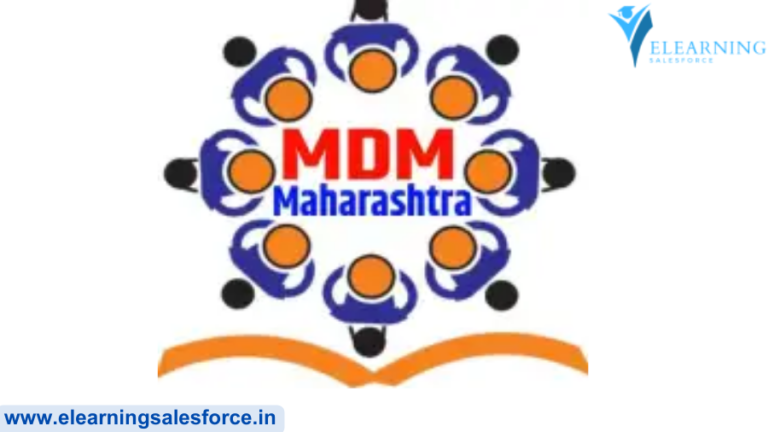Introduction: Salesforce has become the go-to platform for businesses seeking to enhance customer relationships, streamline operations, and drive growth. As a leading customer relationship management (CRM) solution, mastering Salesforce fundamentals is essential for professionals and organizations to maximize its potential. In this blog, we’ll delve into the core concepts of Salesforce, from its purpose and key components to data management, automation, and customization. By understanding Salesforce fundamentals, you’ll be better equipped to leverage this powerful platform and pave the way for business success.
Understanding Salesforce’s Purpose
Salesforce serves as a comprehensive cloud-based CRM solution that empowers organizations to manage customer data, streamline sales processes, and deliver exceptional customer experiences. Its core mission is to help businesses build and maintain strong customer relationships, enabling them to generate leads, convert prospects, and drive revenue growth.
Navigating the Salesforce User Interface
At the heart of Salesforce lies its intuitive user interface, designed to enhance user experience and efficiency. The user interface comprises tabs, apps, objects, fields, and records, allowing users to access, create, and edit data seamlessly. Familiarizing yourself with the user interface is crucial for navigating the platform effortlessly. Salesforce Fundamentals
Managing Data with Salesforce Objects
Salesforce organizes data through objects, which are akin to database tables. Standard objects, such as accounts, contacts, and opportunities, are predefined by Salesforce. Additionally, businesses can create custom objects tailored to their specific needs, like project details or inventory items. Understanding objects is fundamental to organizing and managing data effectively.
Customizing Salesforce with Fields and Page Layouts
To ensure Salesforce meets the unique requirements of your organization, customization is essential. Fields define the data that can be captured within each object, while page layouts control how data appears on each record. Mastering field and page layout customization empowers businesses to capture and display the most relevant information for their processes. Salesforce Fundamentals
Automating Processes with Workflows and Process Builder
Salesforce workflows and Process Builder offer powerful automation capabilities. Workflows allow users to set up automatic actions triggered by specific events or criteria, while Process Builder provides more complex and flexible automation, linking multiple actions together. Learning to implement workflows and Process Builder is vital for streamlining repetitive tasks and increasing productivity.
Leveraging Salesforce Reports and Dashboards
Salesforce offers robust reporting and dashboard features, enabling users to gain real-time insights into business performance. Reports present data in a tabular format, while dashboards present data visually through charts and graphs. Mastering the art of creating, customizing, and interpreting reports and dashboards empowers businesses to make data-driven decisions.
Implementing Salesforce Security
Data security is a top priority for every organization. Salesforce provides various security measures, such as profiles, roles, and permission sets, to control access to data and features within the platform. Understanding how to implement robust security settings ensures that sensitive data remains protected from unauthorized access.
Integrating Salesforce with External Systems
In today’s interconnected world, data integration is crucial for seamless business operations. Salesforce offers various integration options, including APIs and middleware tools, to connect with external systems like marketing automation platforms or finance systems. Knowledge of integration enables businesses to unify data across multiple platforms and improve overall efficiency.
Embracing Mobile with Salesforce Mobile App
The Salesforce mobile app brings the power of Salesforce to users’ fingertips, allowing them to stay connected and productive on the go. Exploring the mobile app and leveraging its features enhances collaboration and productivity, especially for remote or field-based teams.
Conclusion
Salesforce fundamentals form the bedrock for mastering this powerful CRM platform. By understanding its purpose, navigating the user interface, managing data through objects, and customizing the platform to meet specific needs, professionals and organizations can optimize their Salesforce experience.
Additionally, automating processes, leveraging reports and dashboards, implementing robust security measures, and embracing data integration contribute to a seamless and efficient Salesforce environment. As businesses continue to evolve and seek innovative ways to drive growth and customer satisfaction, mastering Salesforce fundamentals becomes crucial in staying ahead of the competition.
By investing time and effort in learning the core concepts of Salesforce, individuals and organizations can unlock the platform’s full potential, empower their teams, and make informed decisions based on real-time insights. Embrace Salesforce fundamentals, and embark on a journey towards transforming your business and delivering exceptional customer experiences.




